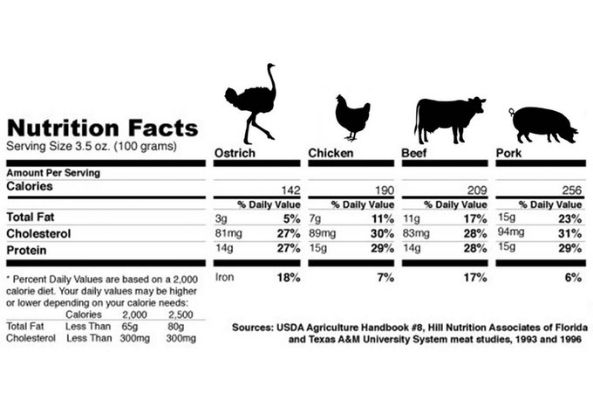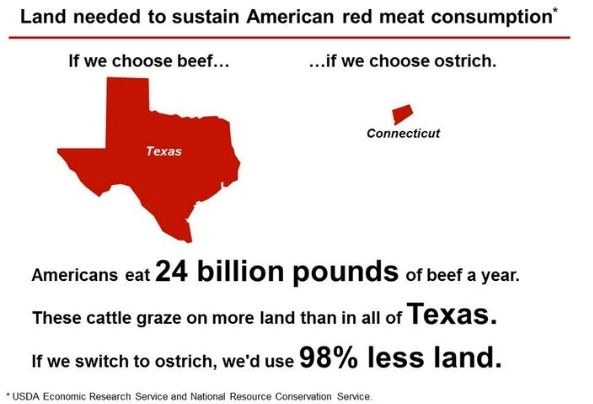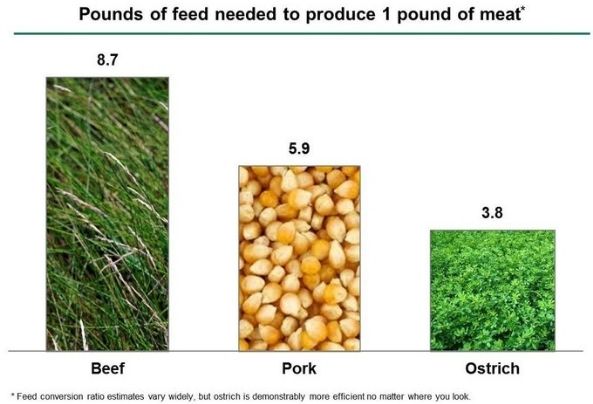Why Ostrich
Ostrich: A Better Red Meat
These enormous, flightless African birds are raised on farms around the world for their meat, eggs, feathers, and hides. Ostrich meat is classified as poultry and is nutritionally similar to poultry. But it’s more like a “red” meat, similar to beef in color, texture, and taste.As with beef, ostrich gets its red color from myoglobin, a protein in muscle that turns red when exposed to oxygen. But unlike beef, which can be high in intramuscular fat (that is, marbling), the fat in ostrich can be easily removed. You find Ostrich Fat between the muscle and the skin, so the meat is largely without fat. Ostrich meat is also lower in saturated fat than beef.can use this widget to input text into the page.
Nutrition: Ostrich vs Poultry vs Beef
Depending on the cut, a 3.5-ounce portion of Ostrich Meat, uncooked, has about 2 to 3 grams of total fat (about 1 gram saturated) and 110 to 125 calories, similar to skinless poultry breast (see chart below).By comparison, three of the leanest cuts of beef have 4 to 5 grams of total fat (about 1 to 2 grams saturated) and 125 to 130 calories per 3.5 ounces, while some fattier beef cuts, even when trimmed of visible fat, have at least 6 to 11 grams of total fat (2 to 4 grams saturated) and more than 140 calories.Ground Ostrich Meat has 9 grams total fat (2 grams saturated) and 165 calories per 3.5 ounces, compared to 15 grams of total fat (6 grams saturated) and 250 calories in 85 percent lean ground beef.

Environmental Advantages of Ostrich
Impressive nutrition stats are not the only reason ostrich meat is an attractive alternative to beef. It’s also a more sustainable and environmentally friendly source of animal protein.
Land Requirements
Farm raised ostriches require very little land, and like all non-ruminant herbivores, they produce much less methane than cows and other ruminant animals. Greenhouse gases such as methane are major contributors to climate change, and methane emissions from livestock represent a significant percentage of the total greenhouse gases produced by human activities.


Feed Requirements
Ostriches also require less feed than cows, and they have a faster and higher meat yield. Female ostriches produce a minimum of 15 surviving chicks per year, each reaching marketing age about 400 days from conception. Cows give birth at most once per year, and it takes about 650 days from conception for a calf to be market-ready. About three times more feed is needed.
